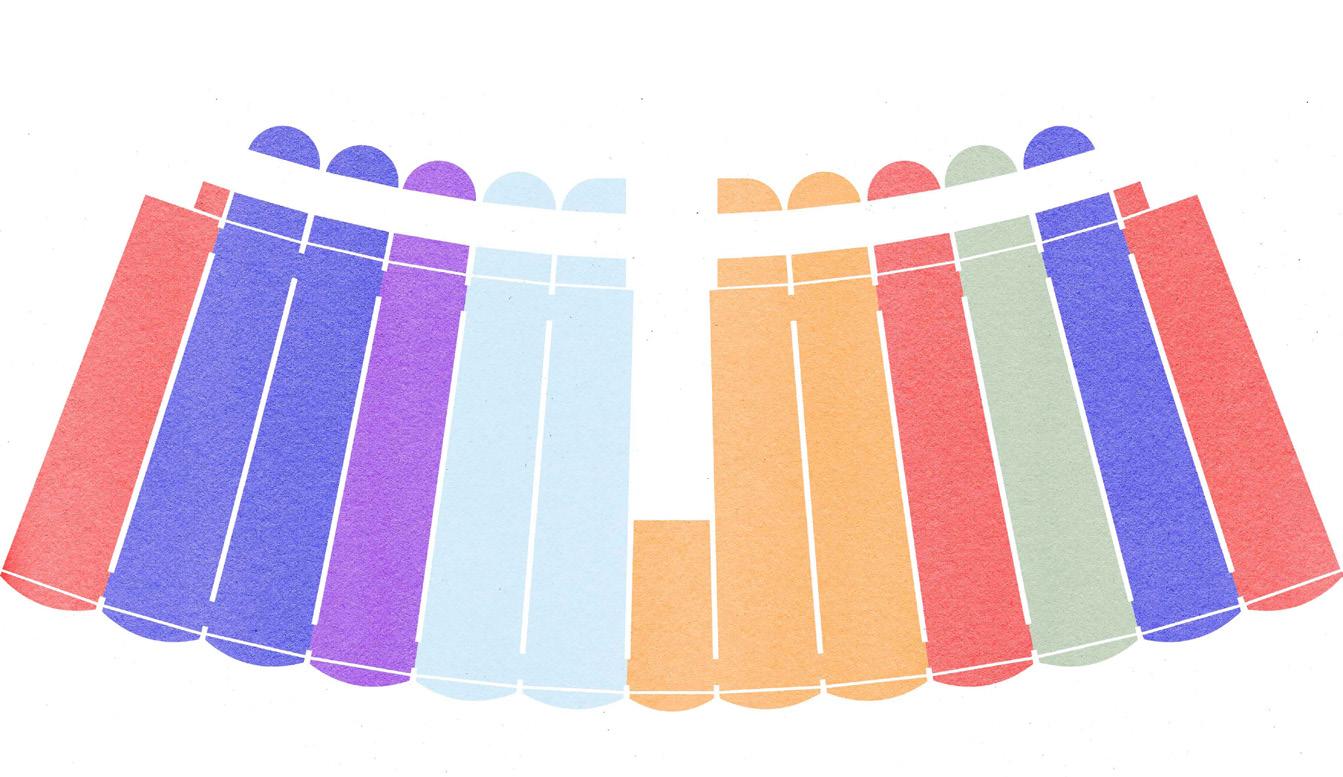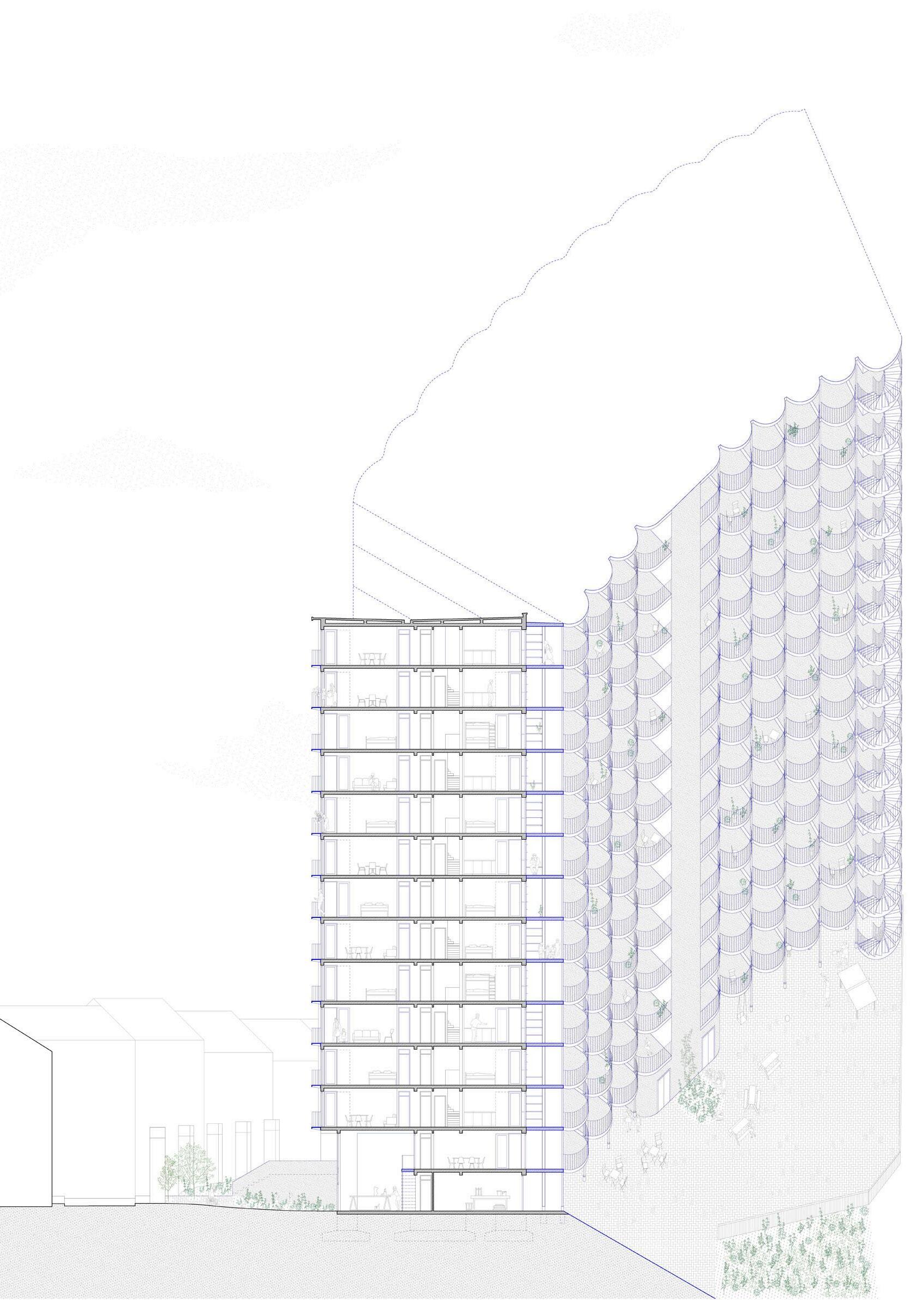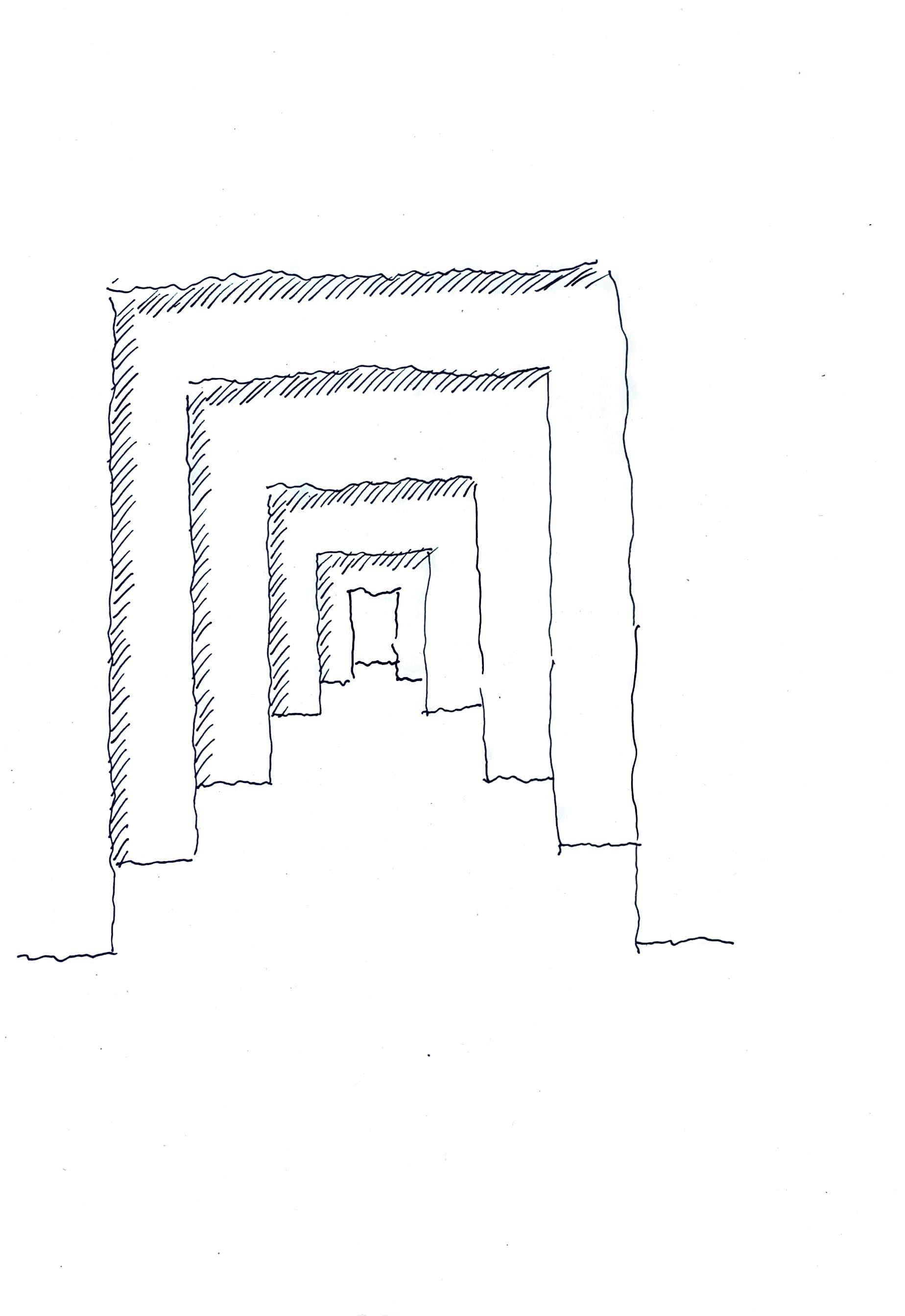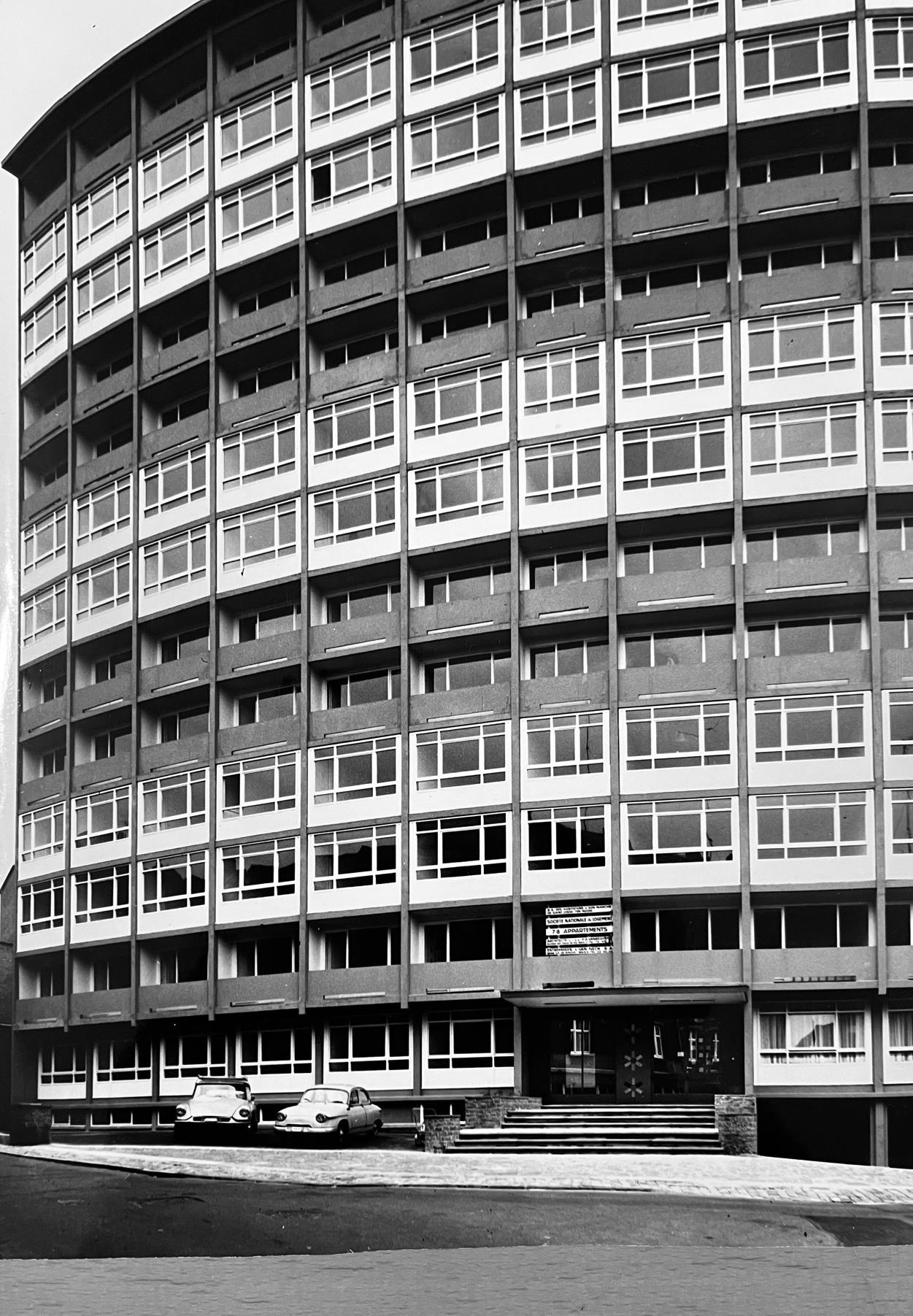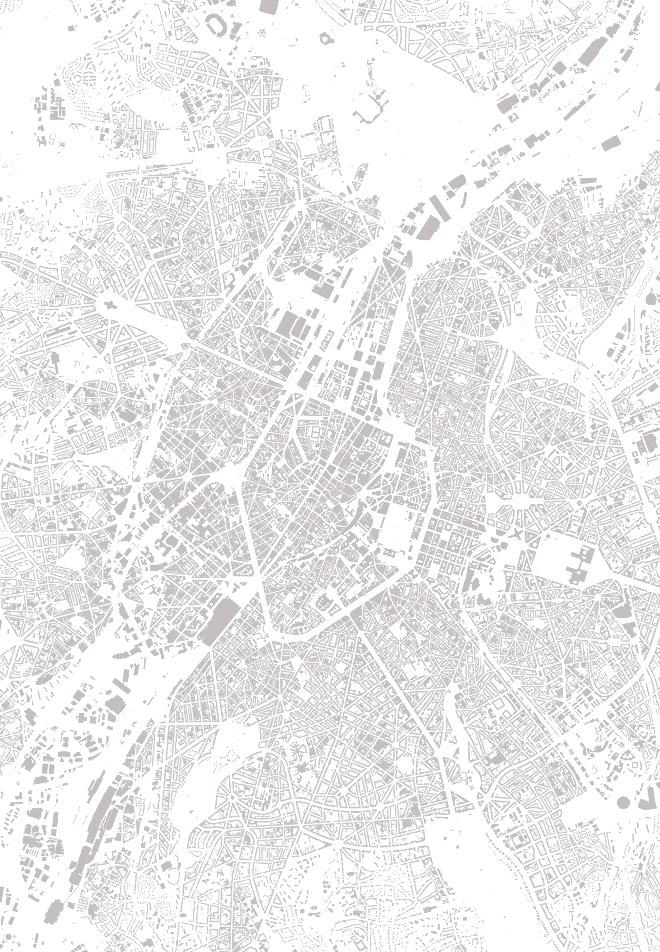
4 minute read
Possible Configuration over two Floors
If this configuration were extended to all levels of the building, 66 residential units could be created. Although this is a reduction from the original number of 78 units, the reconfiguration results in a higher average size, as at least 50 per cent of the apartments are now larger units with more bedrooms. In addition, the ground floor apartments have been converted into communal spaces for the benefit of all residents.
Calculation of the total number of units based on the possible configuration example
Advertisement
Studios x 6
1 Bedroom x 6
2 Bedrooms x 12
2 Bedrooms (Duplex) x 18
3 Bedrooms x 6
4 Bedrooms (Duplex) x 12
5 Bedrooms (Duplex) x 6
* 66 Units
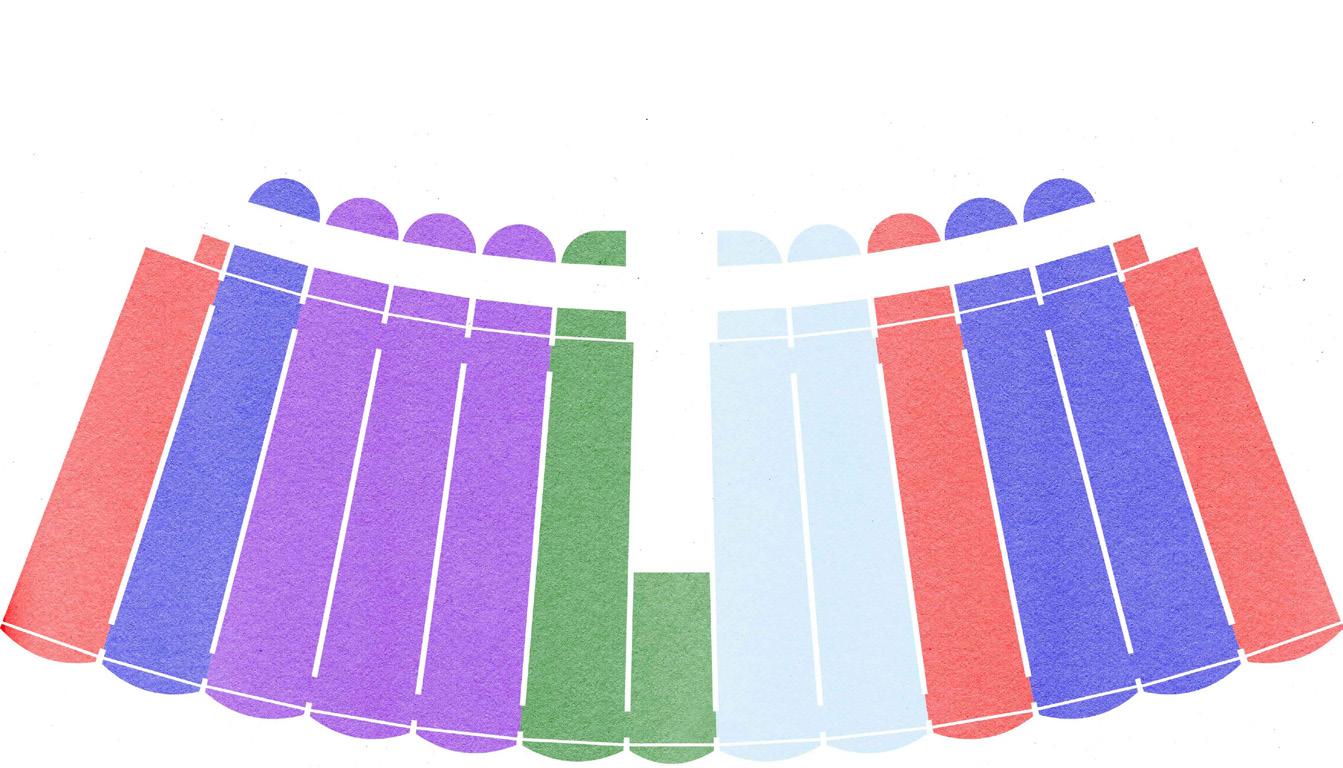
STUDIO, 42,5 sqm
1 BEDROOM, 57,5 sqm
2 BEDROOMS, 85 sqm
2 BEDROOMS DUPLEX, 85 sqm
3 BEDROOMS, 100 sqm
4 BEDROOMS DUPLEX, 172,5 sqm
5 BEDROOMS DUPLEX, 170 sqm
The entrances form a threshold space before entering the apartment which serve as a transition area that marks the boundary between the public and the private.
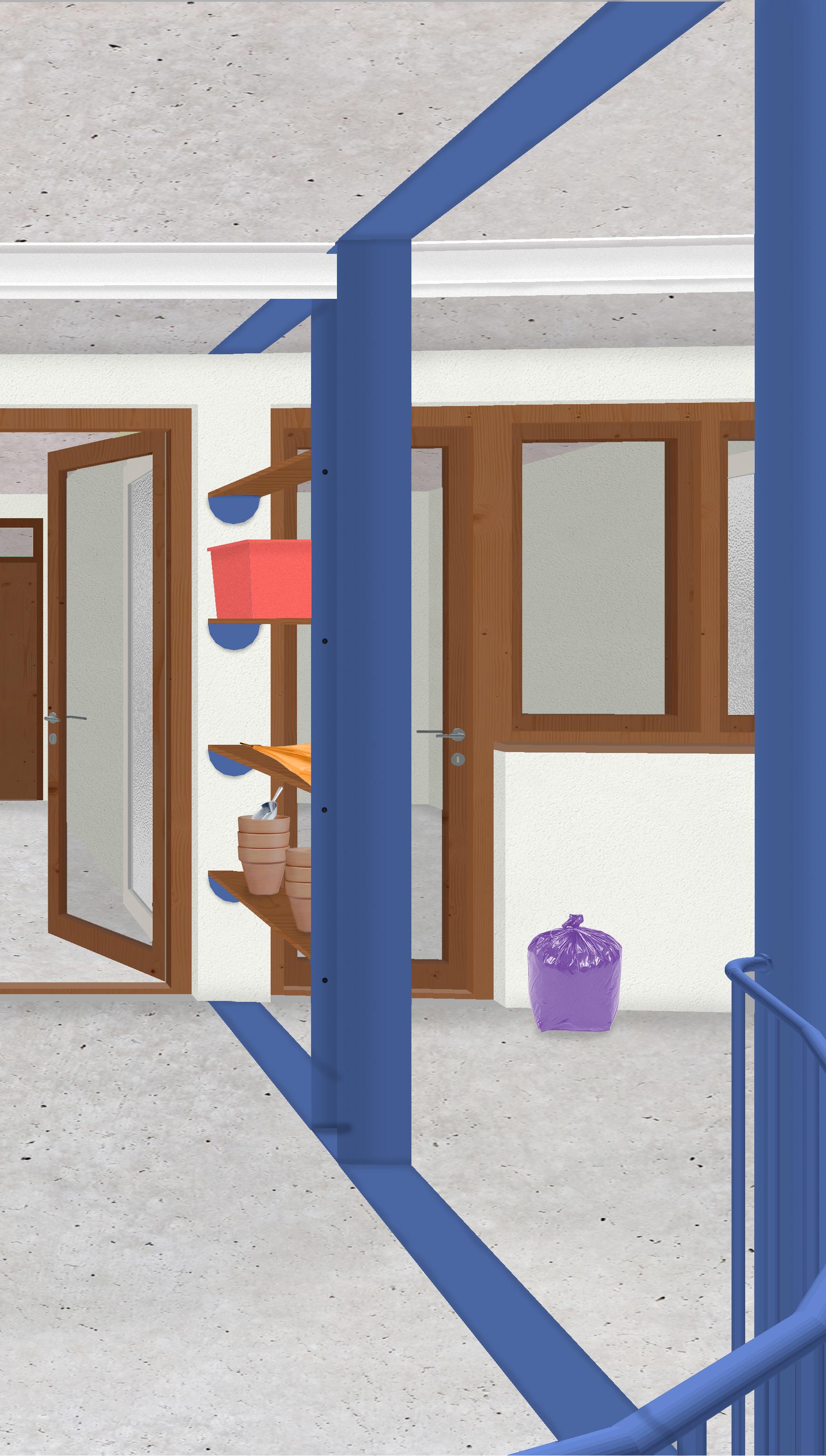
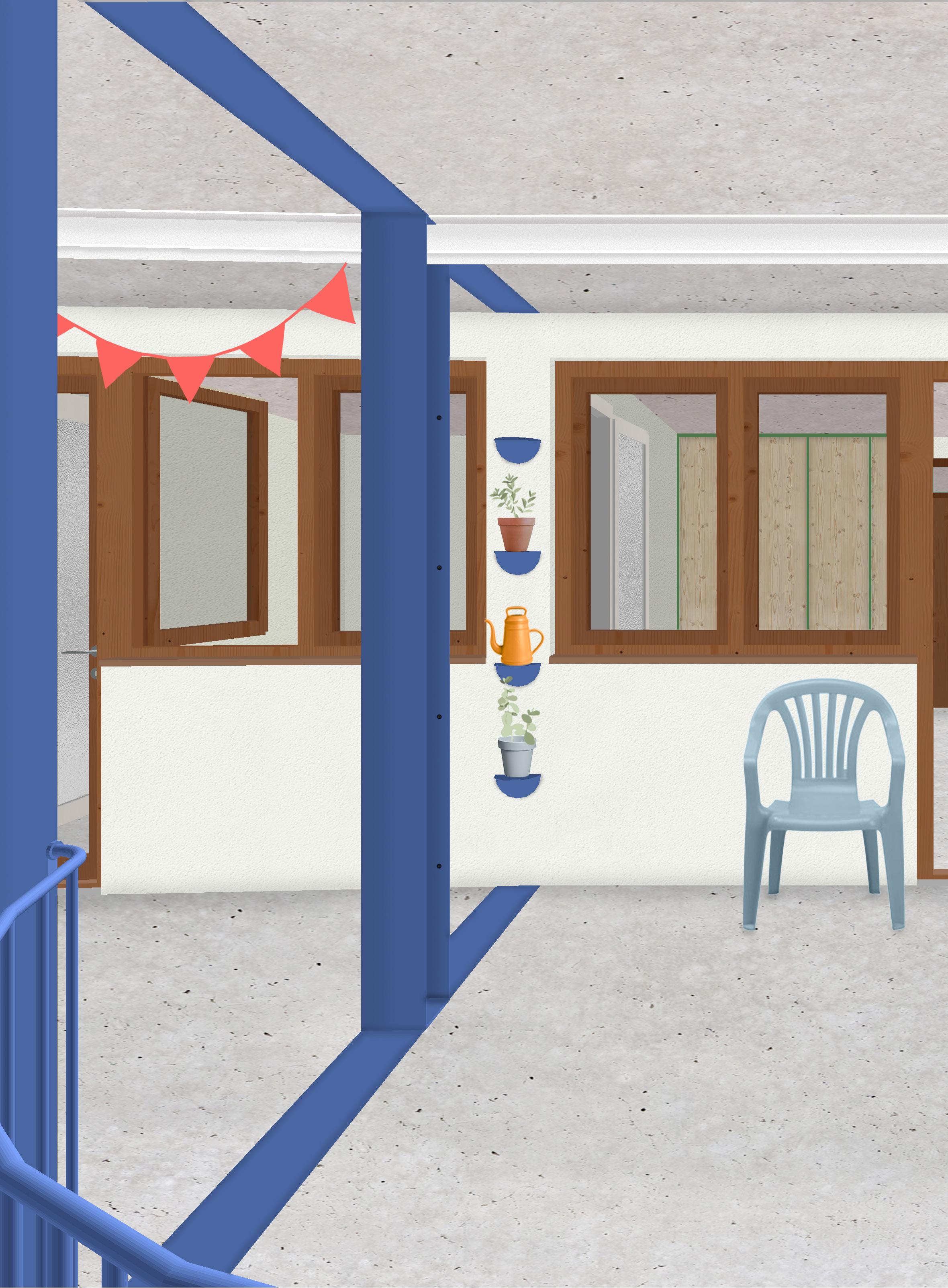
The perforations in the steel supports and the supplied angles between the apartments enable individual adjustments of the partitions. Thus, each party can decide for itself to what extent it wants to draw a line.
Instead of a solid wall, it becomes more of a filter that offers a certain degree of privacy and yet conveys a feeling of openness.
The layer comprises a public street in the middle, with balconies located in front and the private entrances adjacent to the facade.
It can be described as an interconnecting element, that not only meets functional requirements but also creates a space for encounters and adds to the territorial depth of the building.
The possibility of individual appropriation of the private entrance area and the balcony in front counteracts anonymity. This aspect allows residents to establish a connection and sense of identity with their own unit.
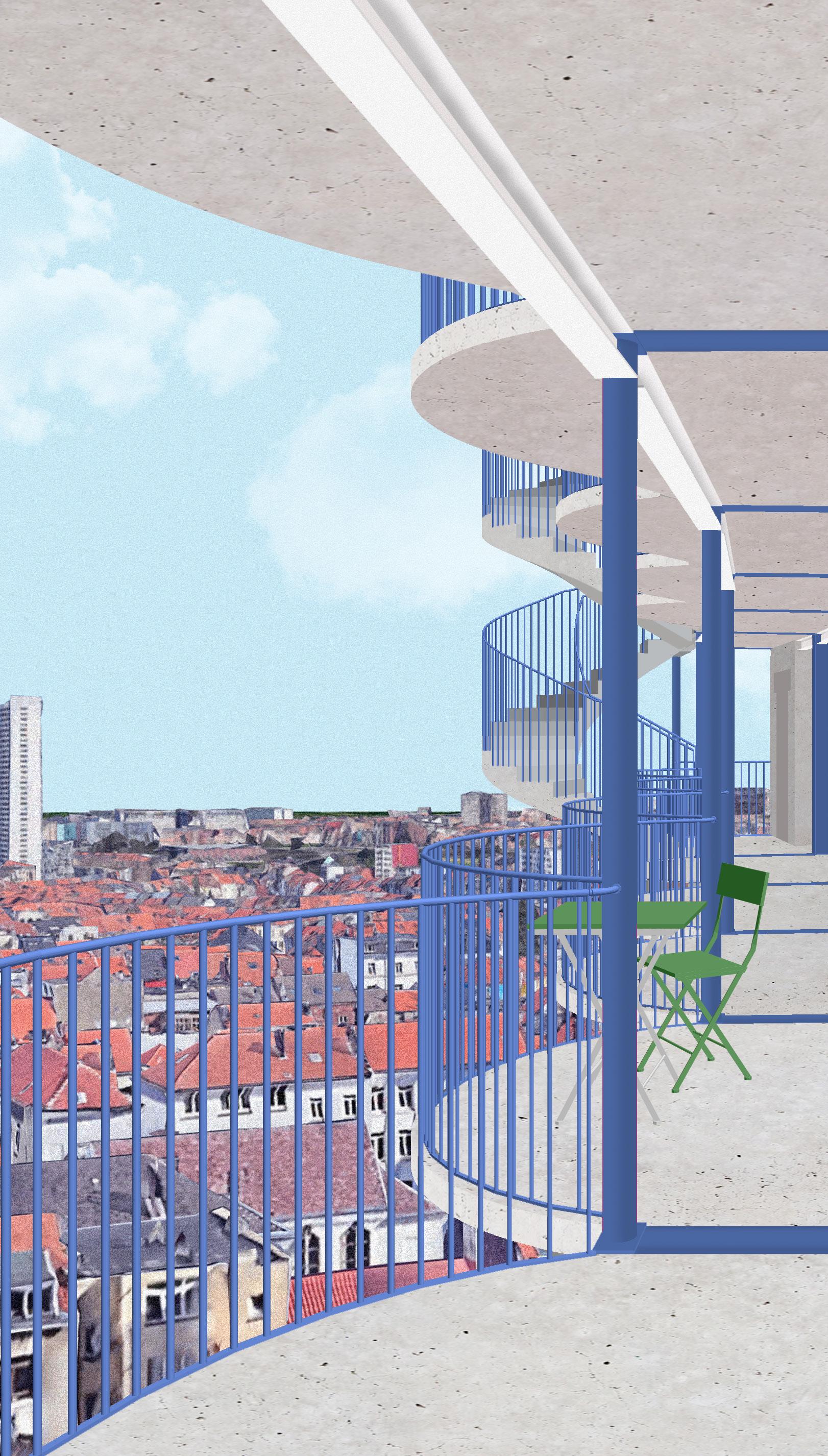
In addition, the overall space is enhanced and made more vibrant by these personalised elements.
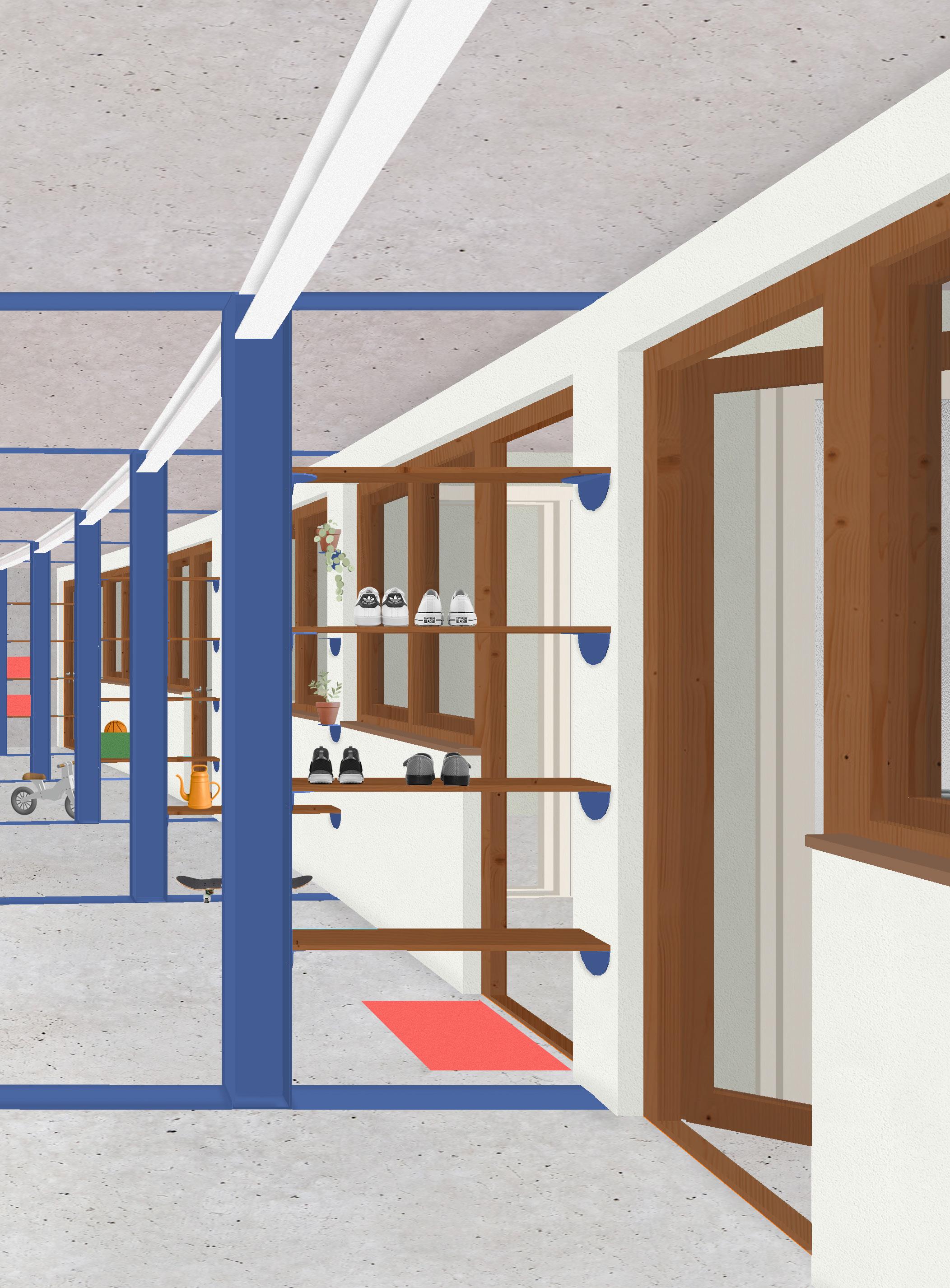
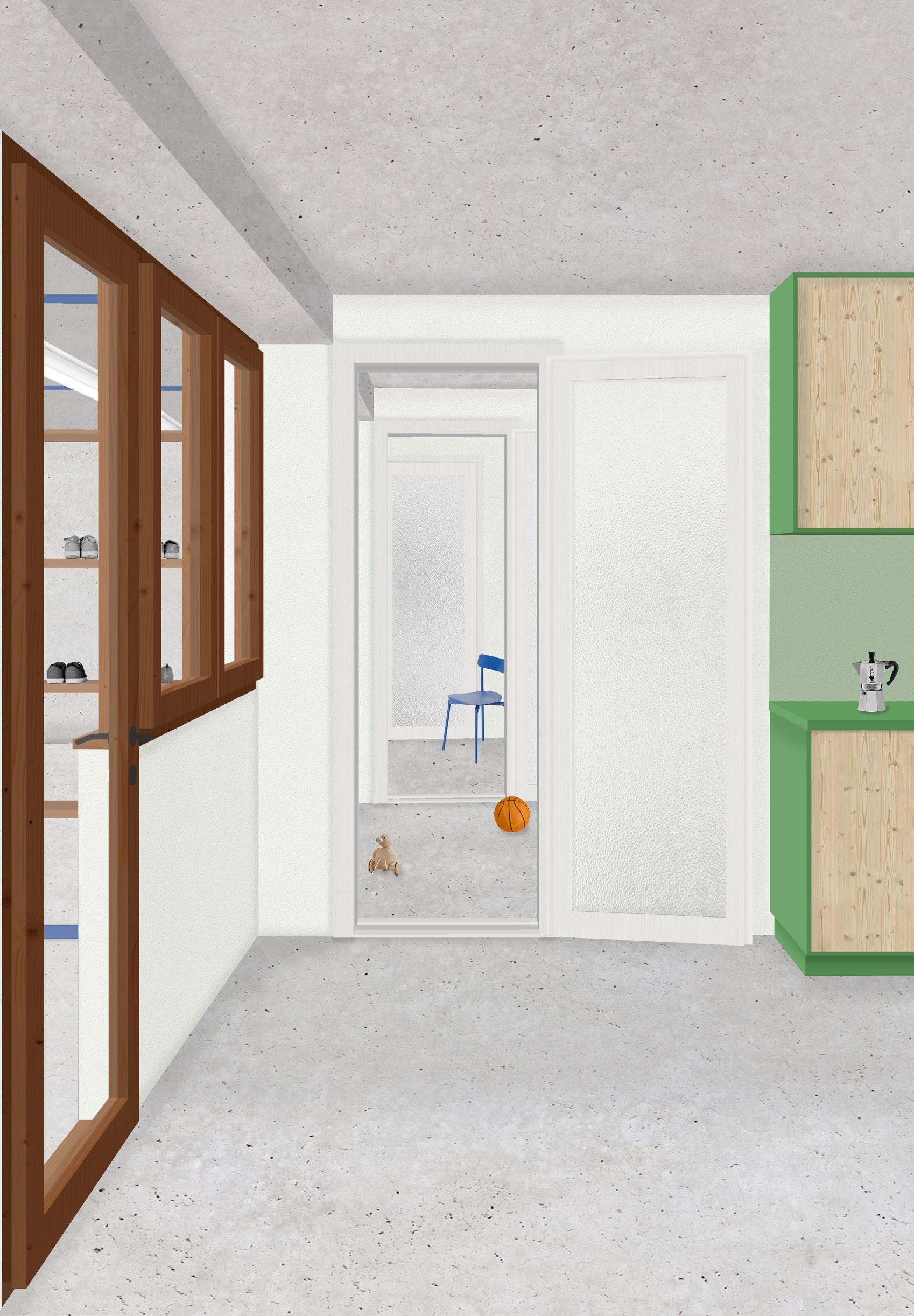
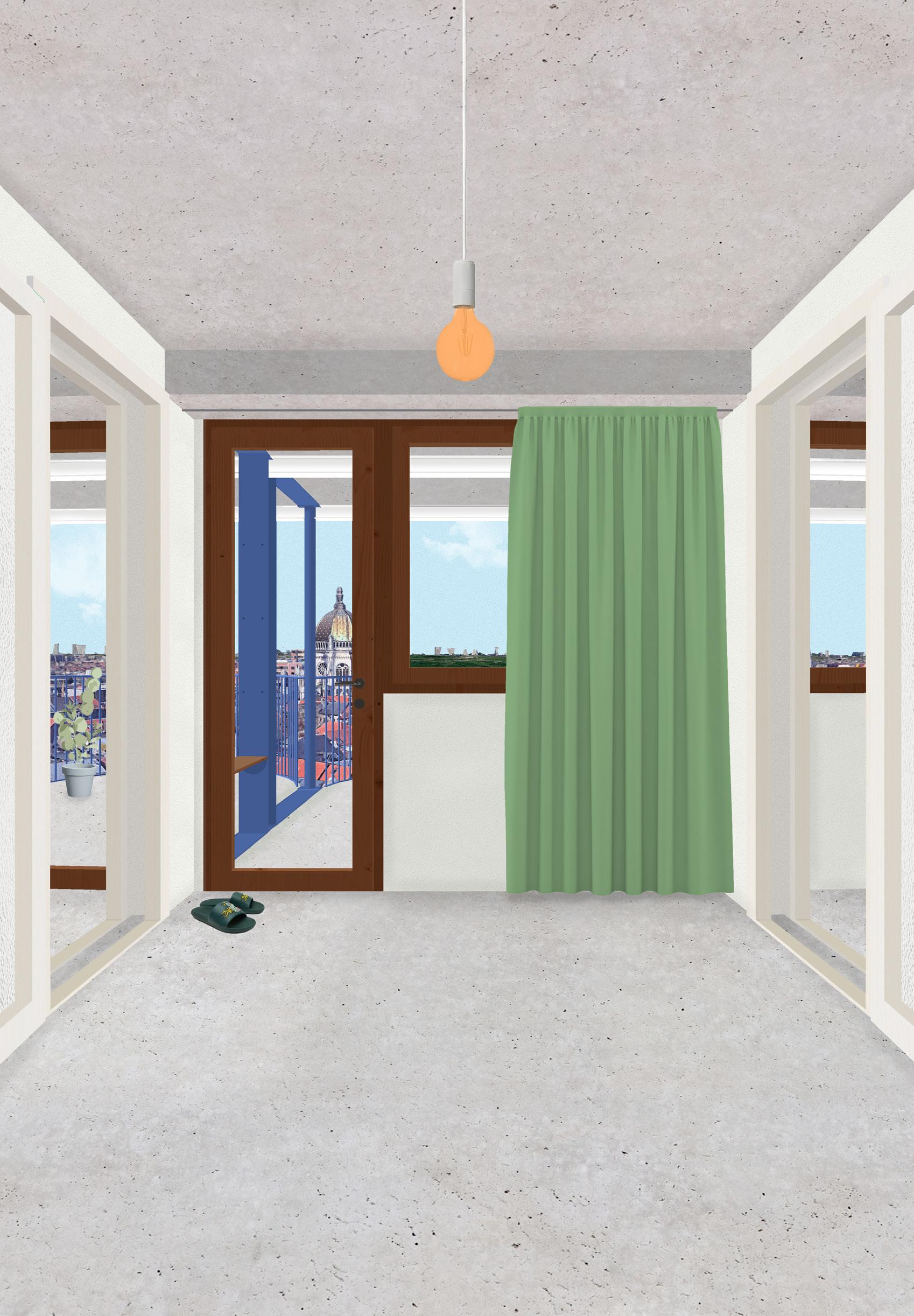
In places where a vertical connection is not necessary due to the introduction of a different housing typology, the staircase is divided by a drywall, with the upper part allocated to the apartment above and the lower part to the apartment below as additional storage or a place to sit.
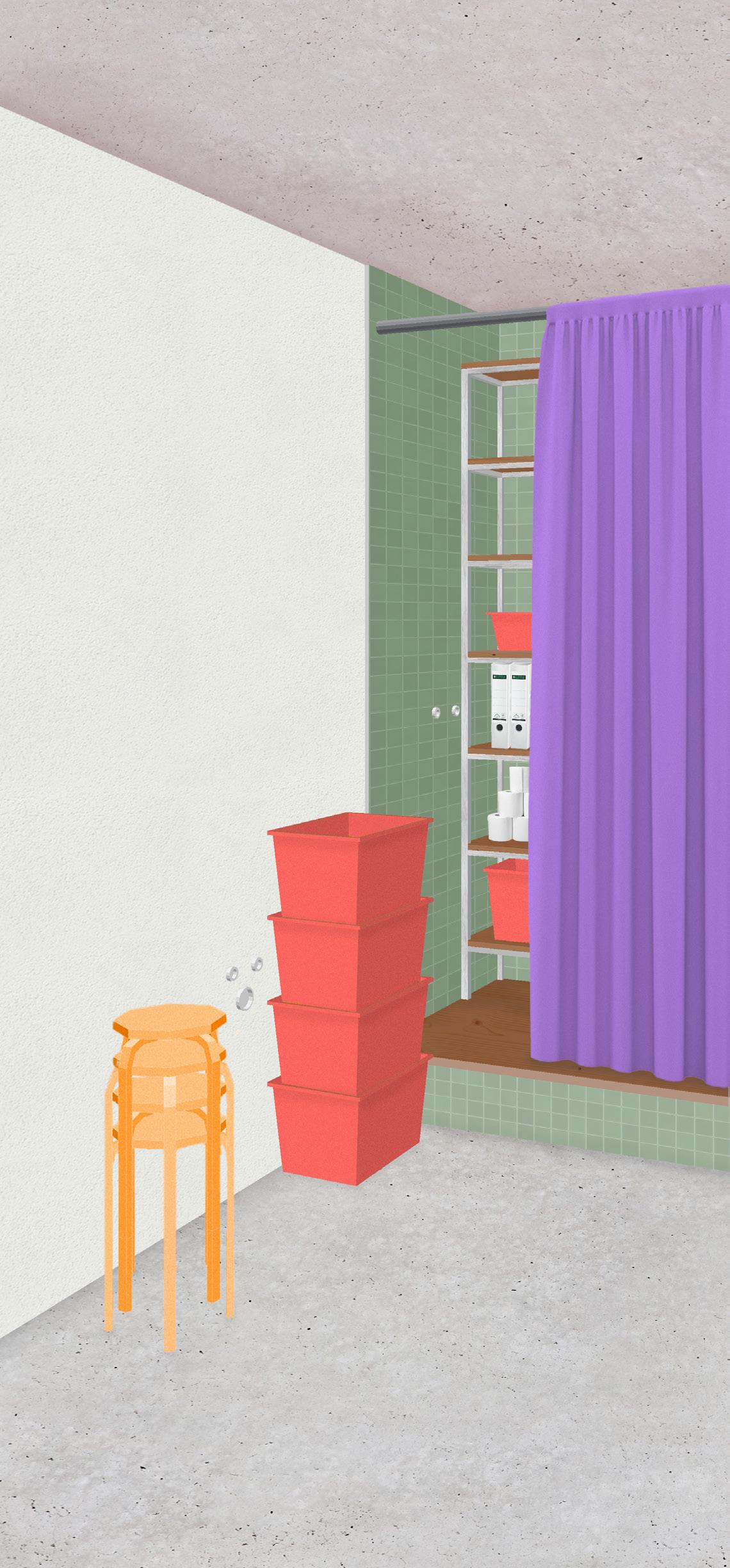
In this way, the staircase can be preserved and there is still the possibility for future vertical connections. If desired, the lightweight drywall can be dismantled at a later date to facilitate reconnection.
Where an additional bathroom is not needed the room can serve as a storage space.
These storage spaces can help reduce the need for individual wardrobes and cupboards and free up living space in the apartments.
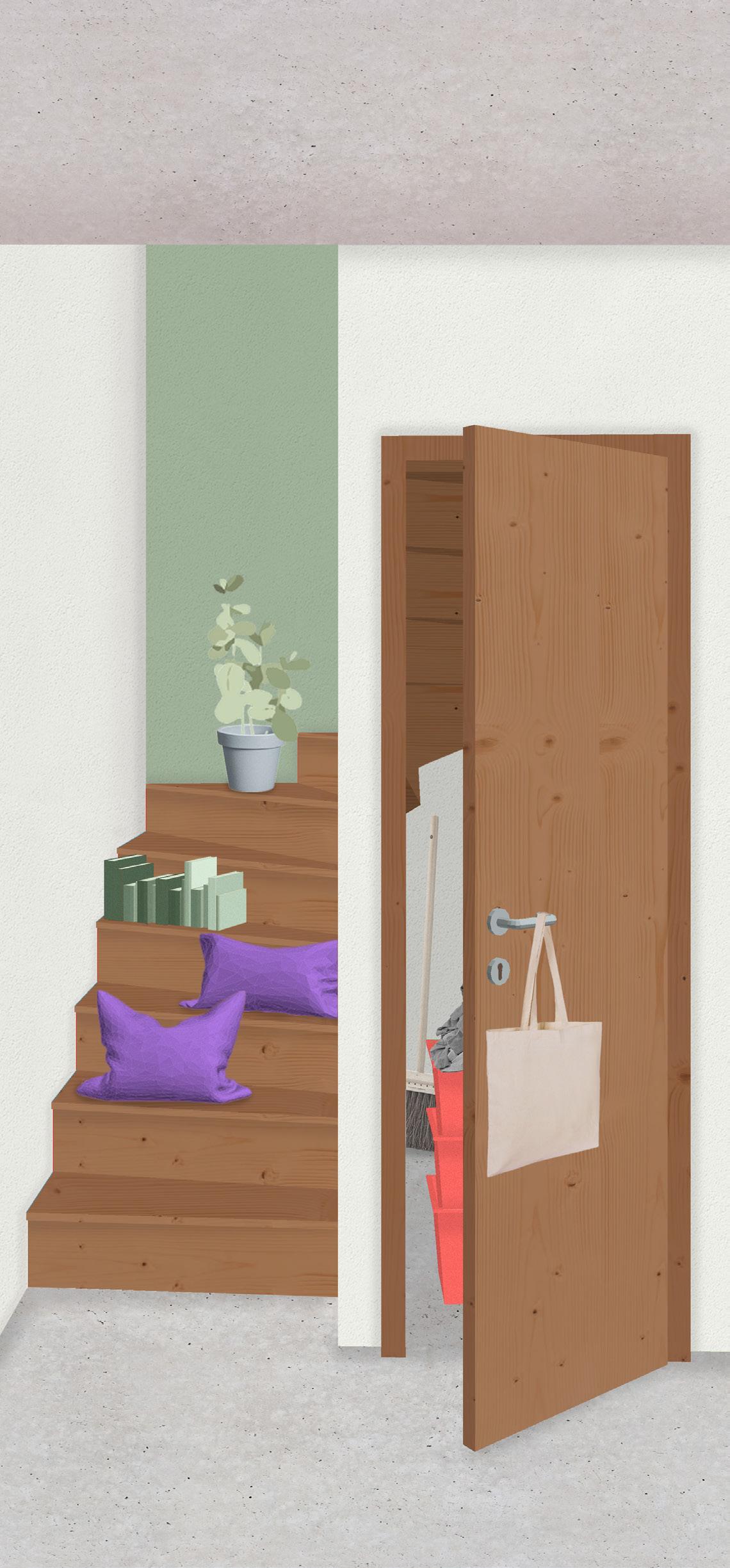
The floor-to-ceiling windows create an open and seamless connection between the interior and exterior space. This allows for a dynamic and altering relationship.
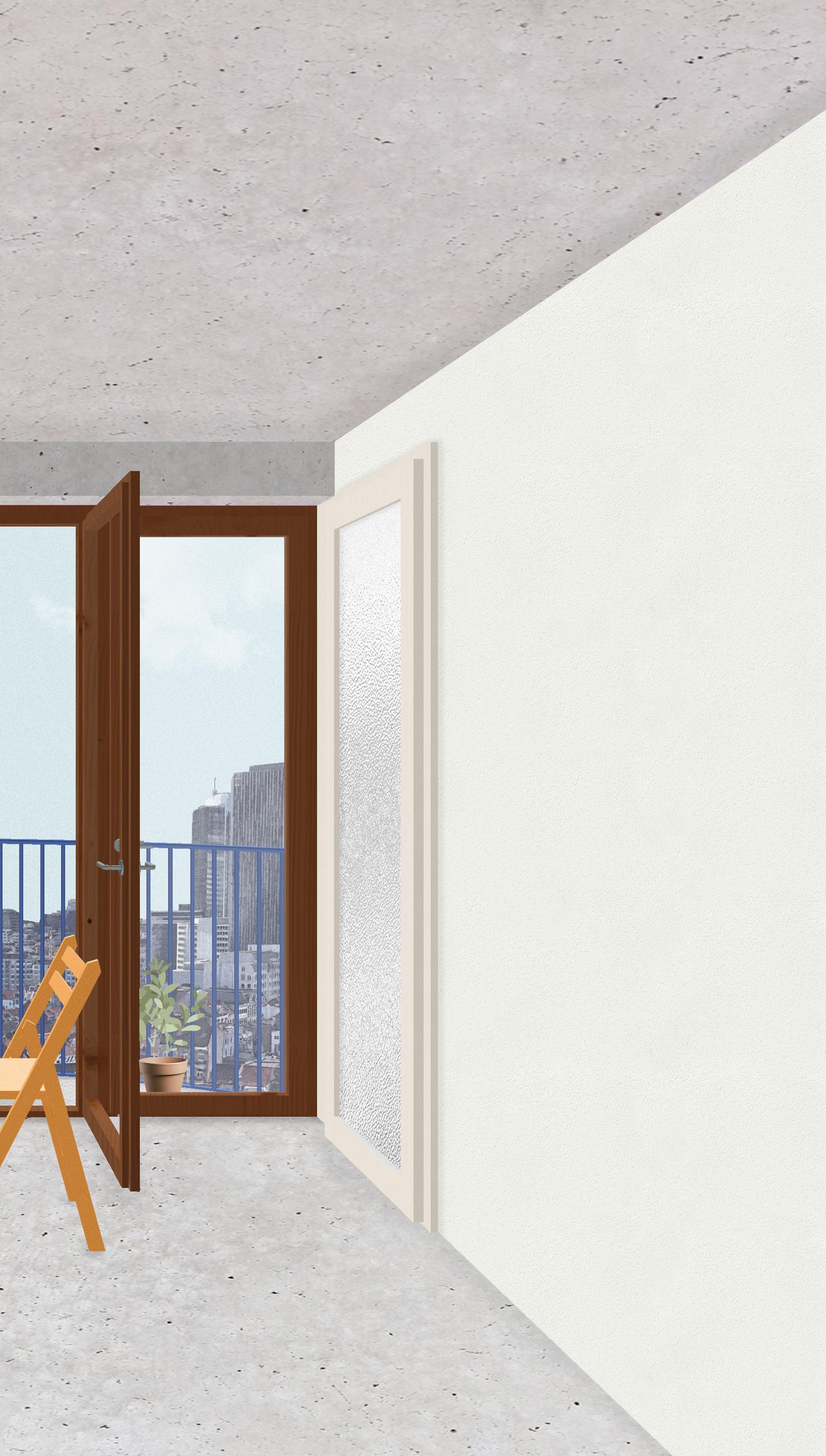
Even when inside the apartment, one can feel being outside.

Along the facade, the Enfilade not only acts as a connecting element, but also challenges the constraints of the narrow existing structure and allows more natural light to permeate the space.
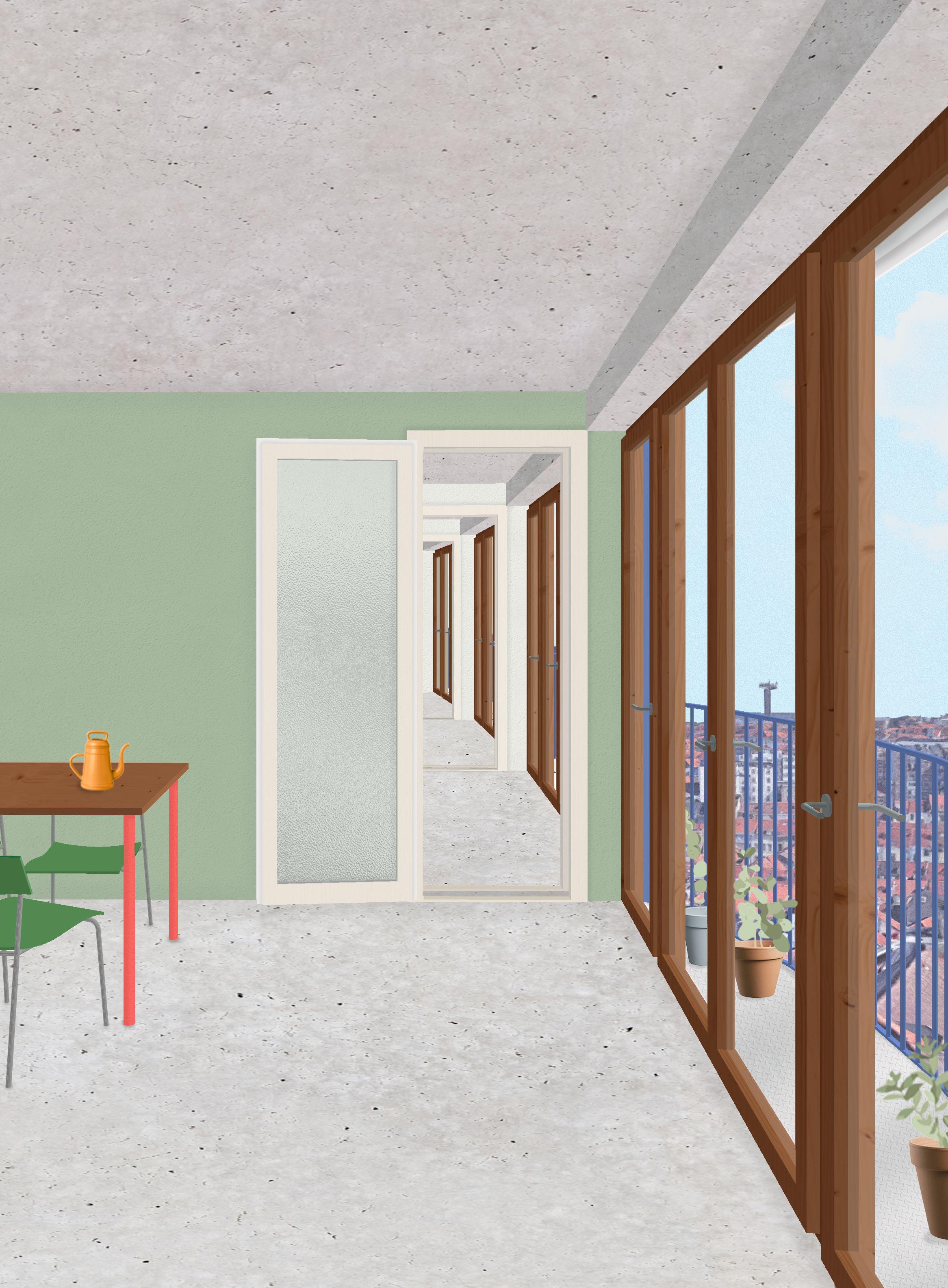
It is important to emphasise that the design does not impose the idea of openness and disregard privacy, but rather offers an opportunity and a possible shift in perspective.
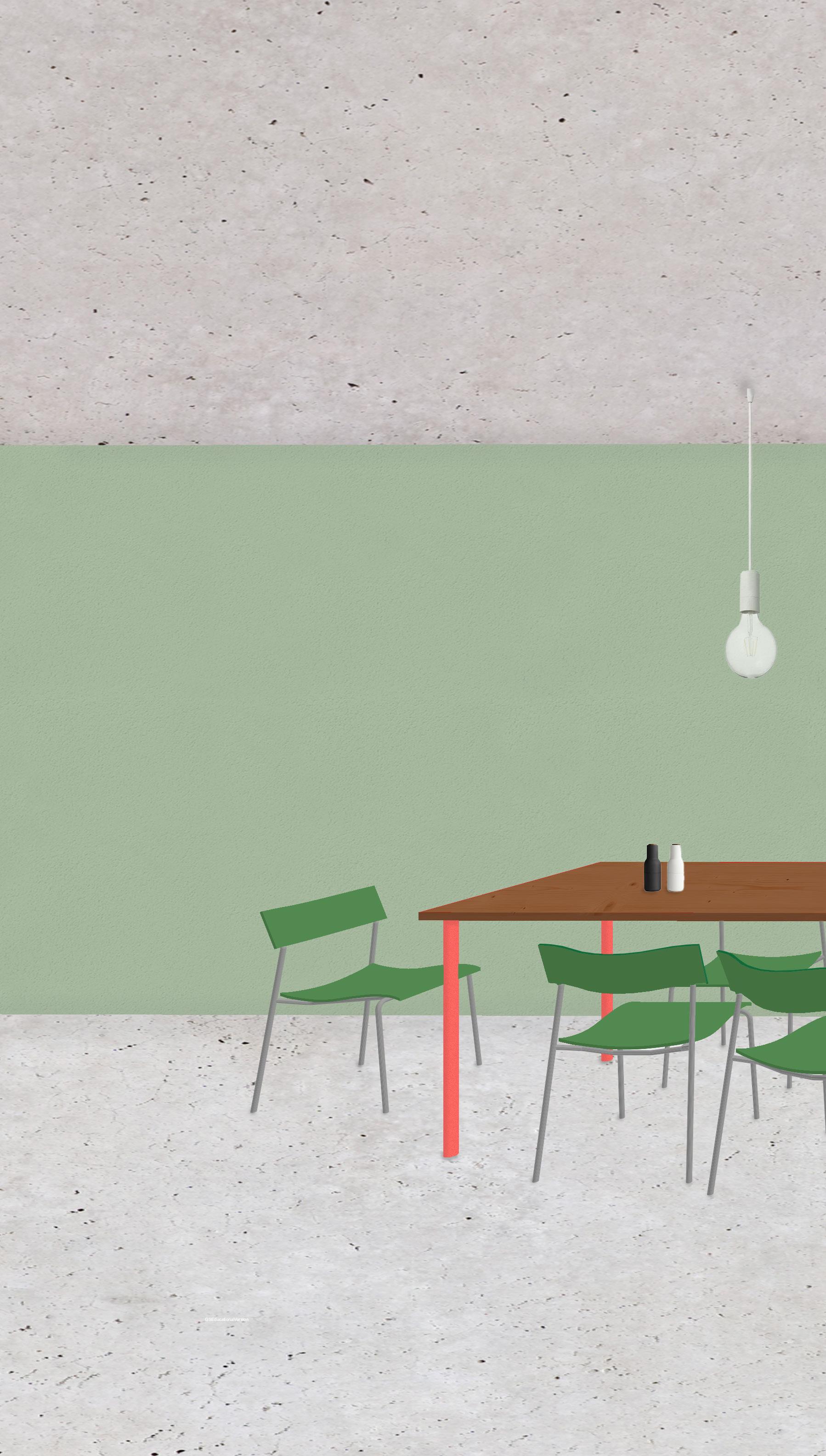
Conclusion
Sometimes, a simple gesture is all it takes to pave the way for a brighter future.
Two doors can connect worlds, but they do not have to.
Starting from the investigation and mapping of different boundaries and their qualities around the Moulin 41 this project aimed to transform and shift these boundaries with reduced and simple actions including one architectural motive, on the level of built matter, but also on the level of society as both are dependent on each other.
Based on the assumption that buildings should constantly adapt to changing external and internal circumstances, the proposal does not aim to create a fixed and final image. Instead, it provides food for thought and presents a design variant. This approach offers a potential glimpse into the future, prioritizing adaptability and flexibility. By embracing the transformation process, the proposal avoids striving for a rigid and unchangeable result.
The motive of the enfilade not only provides the new arrangement of the appartement types but also creates an architectural quality that brightens up the narrow segments by dissolving the boundary. On the northern side the territorial depth and the qualities of the gallery hallway is used as a positive notion which is enhanced in the new circulation. The southern facade rewrites the relation between the inside and the outside of the appartements with the small balcony.
The openness that this approach entails creates spaces that provide opportunities for appropriation. Especially in the context of often overregulated social housing this provides a new perspective.
The proposal, in itself, may not be used as a general framework for social housing refurbishments since the interventions were developed very precisely based on the specific observations made and in dialogue with the existing structure. However, the approach can provide an impetus and be transferred to other refurbishment projects and setting the transformation process in motion.
I see it as an enrichment and a great opportunity to have worked on a real life project and to be part of a contemporary discourse, as the final project of my Master‘s degree.
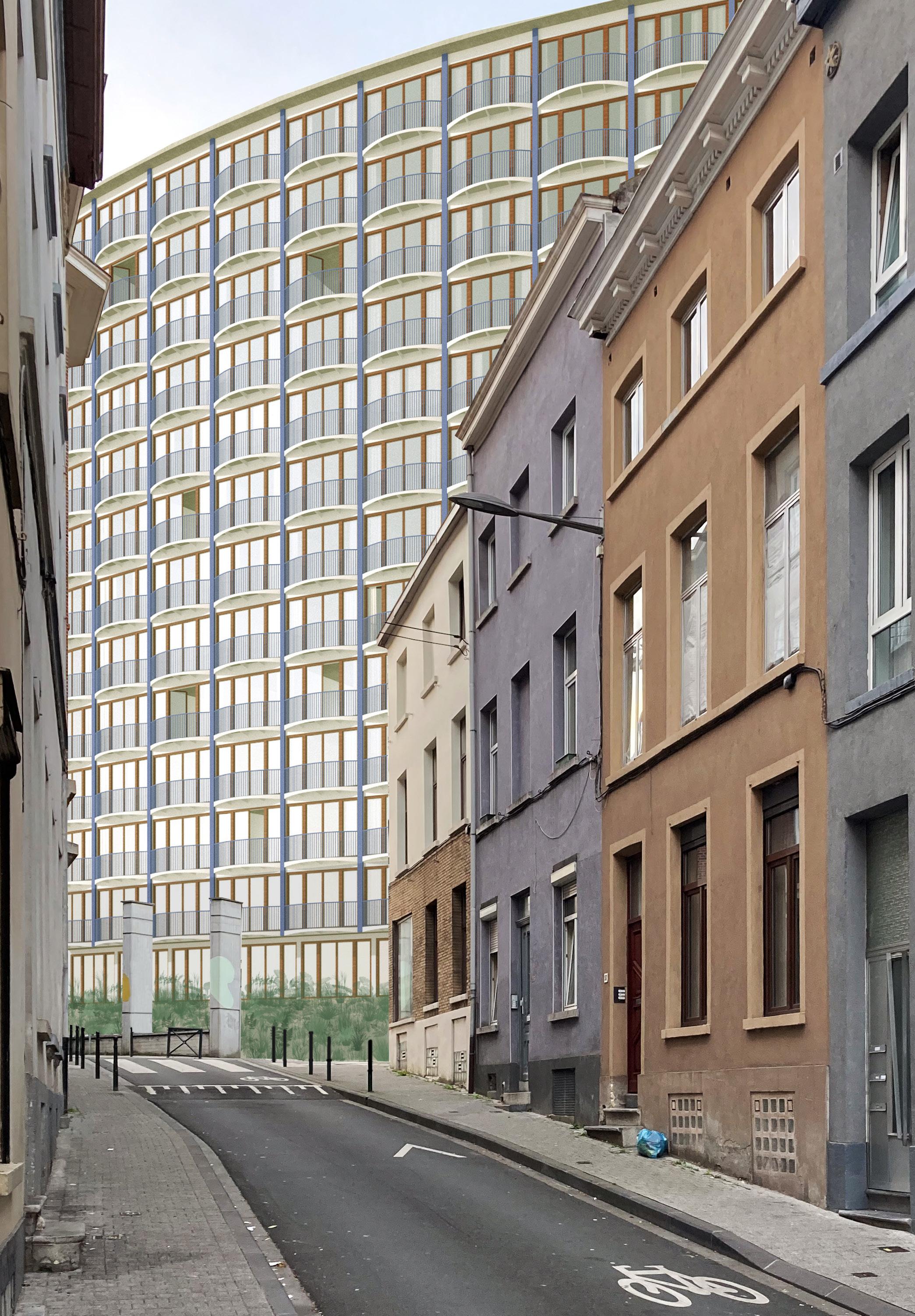
Bibliography
Source 1:
Bouwmeester Maître Architecte description of the tender from the studio description by Harold Fallon and Sophie Laenen
Source 2: blog-archkuleuven.be Studio introduction by Sophie Laenen and Harold Fallon
Source 3:
Vandermotten Christian, Jorissen Denis. Le logement social à Bruxelles depuis 1919, p. 143
Source 4:
Andrea Migotto. Shaping Collective Life in Twentieth Century Belgian Social Housing, Architecture and Culture, p. 590-591
Source 5:
Nawal Ben Hamou, PLAN D’URGENCE LOGEMENT, 2020-2024
Source 6:
Bouwmeester Maître Architecte description of the tender of Moulin 41 from the studio description by Harold Fallon and Sophie Laenen
Source 7:
A. Friedman, Fundamentals of Sustainable Dwellings, DOI 10.5822/978-161091-211-2 3, © 2012 Avi Friedman
Source 8:
Floris Alkemade, Michiel van Iersel, Mark Minkjan, Jarrik Ouburg ‘‘Rewriting Architecture 10+1 Actions’’(Tabula Scripta), p. 23.
Source 9:
Grafe, C. & Nordrhein-Westfalen, B. (2020). Umbaukultur: The Architecture of Altering. Kettler Verlag Umbaukultur: The Architecture of Altering.





